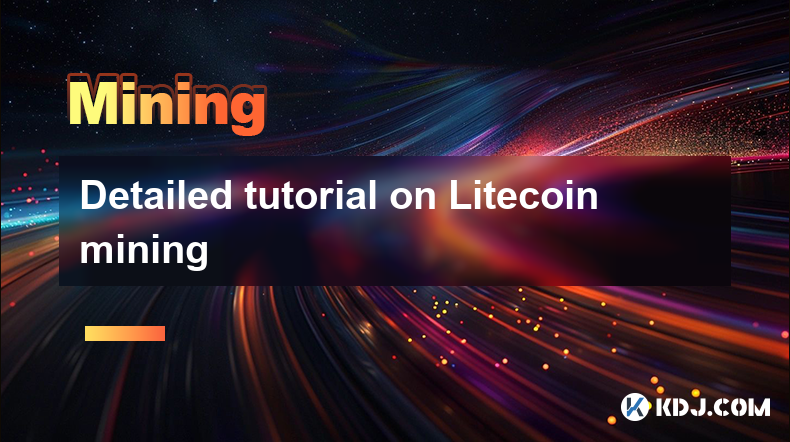-
 Bitcoin
Bitcoin $106,437.2012
0.82% -
 Ethereum
Ethereum $2,442.5287
0.82% -
 Tether USDt
Tether USDt $1.0005
-0.02% -
 XRP
XRP $2.1812
-0.27% -
 BNB
BNB $645.1327
0.45% -
 Solana
Solana $146.2379
0.39% -
 USDC
USDC $0.9999
-0.01% -
 TRON
TRON $0.2751
0.92% -
 Dogecoin
Dogecoin $0.1662
-0.23% -
 Cardano
Cardano $0.5827
-1.22% -
 Hyperliquid
Hyperliquid $37.5225
0.04% -
 Bitcoin Cash
Bitcoin Cash $479.0877
4.02% -
 Sui
Sui $2.7846
-3.27% -
 Chainlink
Chainlink $13.3576
0.84% -
 UNUS SED LEO
UNUS SED LEO $9.0252
-1.20% -
 Stellar
Stellar $0.2455
-1.07% -
 Avalanche
Avalanche $18.0680
-1.81% -
 Toncoin
Toncoin $2.8948
-1.07% -
 Shiba Inu
Shiba Inu $0.0...01164
-1.65% -
 Litecoin
Litecoin $85.0637
-0.06% -
 Hedera
Hedera $0.1526
-0.89% -
 Monero
Monero $316.2941
0.78% -
 Ethena USDe
Ethena USDe $1.0003
-0.04% -
 Polkadot
Polkadot $3.4113
-1.87% -
 Dai
Dai $1.0000
-0.01% -
 Bitget Token
Bitget Token $4.4488
5.16% -
 Uniswap
Uniswap $7.1740
3.09% -
 Pi
Pi $0.5968
11.43% -
 Pepe
Pepe $0.0...01010
-0.65% -
 Aave
Aave $264.3189
0.40%
Detailed tutorial on Litecoin mining
By utilizing GPUs or specialized ASIC hardware, individuals can participate in Litecoin mining, which involves solving complex mathematical equations to validate transactions and earn rewards in the form of Litecoin cryptocurrency.
Jan 11, 2025 at 11:43 am

Detailed Tutorial on Litecoin Mining
Key Points:
- Understanding Litecoin and Its Mining Algorithm
- Choosing the Right Mining Hardware
- Setting Up Your Mining Rig
- Joining a Mining Pool
- Monitoring and Maintaining Your Mining Operation
- Troubleshooting Common Mining Issues
- FAQs
Understanding Litecoin and Its Mining Algorithm
Litecoin is a peer-to-peer cryptocurrency designed to provide fast, secure, and decentralized payments. It is similar to Bitcoin in many ways, but it has some key differences, including its hashing algorithm. Litecoin uses the Scrypt algorithm, which is designed to be more memory-intensive than Bitcoin's SHA-256 algorithm. This makes it more difficult to mine Litecoin using specialized mining hardware known as ASICs.
Choosing the Right Mining Hardware
The hardware you choose for mining Litecoin will have a significant impact on your profitability. There are two main types of mining hardware: GPUs and ASICs. GPUs are general-purpose graphics cards that can be used for a variety of tasks, including mining. ASICs are specialized mining hardware that is designed to be more efficient than GPUs for mining cryptocurrencies.
If you are just starting out, it is recommended to use a GPU for mining Litecoin. GPUs are less expensive than ASICs and they are more versatile. Once you have gained some experience, you can decide if you want to invest in an ASIC.
Setting Up Your Mining Rig
Once you have chosen your mining hardware, you need to set up your mining rig. This involves assembling your hardware, installing the necessary software, and configuring your mining settings.
Assembling Your Hardware:
If you are using a GPU, you will need to connect it to your motherboard and install the necessary drivers. If you are using an ASIC, you will need to follow the manufacturer's instructions for setting it up.
Installing the Necessary Software:
You will need to install a mining software program on your computer. There are many different mining software programs available, so you will need to choose one that is compatible with your hardware and operating system.
Configuring Your Mining Settings:
Once you have installed the mining software, you will need to configure your mining settings. This includes setting the mining pool you want to join, the wallet address where you want to receive your Litecoin rewards, and the difficulty level you want to mine at.
Joining a Mining Pool
Solo mining is no longer profitable for most miners. Instead, it is recommended to join a mining pool. Mining pools combine the hashing power of multiple miners, which increases the chances of finding a block and earning a reward.
There are many different mining pools available, so you will need to choose one that is reputable and has a low fee structure.
Monitoring and Maintaining Your Mining Operation
Once you have your mining rig up and running, you need to monitor it regularly to ensure that it is running properly. You should also perform regular maintenance tasks, such as cleaning your hardware and checking for software updates.
Troubleshooting Common Mining Issues
There are a number of common mining issues that you may encounter. These include:
- Hardware overheating
- Software crashes
- Pool connectivity issues
If you encounter any of these issues, you can try the following troubleshooting steps:
- Hardware overheating: Clean your hardware and make sure that it is properly ventilated.
- Software crashes: Restart your mining software and check for updates.
- Pool connectivity issues: Make sure that your internet connection is stable and that your pool is online.
FAQs
What is the profitability of Litecoin mining?
The profitability of Litecoin mining depends on a number of factors, including the price of Litecoin, the difficulty of the Litecoin network, and the efficiency of your mining hardware. You can use a mining calculator to estimate the profitability of mining Litecoin before you invest in hardware.
What is the best Litecoin mining pool?
There are many different Litecoin mining pools available, so it is important to choose one that is reputable and has a low fee structure. Some of the most popular Litecoin mining pools include:
- Slush Pool
- F2Pool
- AntPool
- NiceHash
How long does it take to mine a Litecoin block?
The average time to mine a Litecoin block is 2.5 minutes. However, the actual time may vary depending on the difficulty of the Litecoin network and the hash rate of your mining hardware.
Disclaimer:info@kdj.com
The information provided is not trading advice. kdj.com does not assume any responsibility for any investments made based on the information provided in this article. Cryptocurrencies are highly volatile and it is highly recommended that you invest with caution after thorough research!
If you believe that the content used on this website infringes your copyright, please contact us immediately (info@kdj.com) and we will delete it promptly.
- Bitcoin Price Soars to $106,596: Is This the Recovery We've Been Waiting For?
- 2025-06-25 12:25:14
- XRP Ledger's New Era: Batch Transactions and Token Escrow Take Center Stage
- 2025-06-25 12:45:12
- JasmyCoin: Price Prediction & the Quest for New Highs
- 2025-06-25 12:25:14
- Arctic Pablo Coin: The Meme Coin Primed for Lift-Off? Plus, Bonk & SHIB Updates!
- 2025-06-25 12:45:12
- BigBear.ai, AMD, QuantumScape: Stocks Soar and Solid-State Batteries Get Real!
- 2025-06-25 12:50:13
- Bitcoin, Ethereum, and the Iran-Israel Ceasefire: A Crypto Market Update
- 2025-06-25 13:05:13
Related knowledge

What is liquidity mining in DeFi? How to participate and calculate the income?
Jun 20,2025 at 03:21pm
Understanding Liquidity Mining in DeFiLiquidity mining is a core concept in the decentralized finance (DeFi) ecosystem that allows users to earn rewards by providing liquidity to decentralized exchanges (DEXs) or lending platforms. In traditional finance, liquidity providers are usually institutional players, but DeFi democratizes this process, enabling...

What is the mining mechanism of digital currency? What hardware and cost investment are required?
Jun 23,2025 at 06:29am
Understanding the Mining Mechanism of Digital CurrencyThe mining mechanism of digital currency is a foundational process that ensures transaction validation and network security. In most Proof-of-Work (PoW) cryptocurrencies like Bitcoin, miners compete to solve complex mathematical puzzles using computational power. The first miner to find a valid solut...

Analysis of hybrid mining protocol: PoW+PoS hybrid profit calculation
Jun 23,2025 at 10:15am
Understanding Hybrid Mining ProtocolsIn the realm of blockchain technology, consensus mechanisms are pivotal in maintaining network integrity and transaction validation. A hybrid mining protocol combines two or more consensus algorithms to achieve a balance between security, decentralization, and energy efficiency. The most commonly adopted hybrid model...

How to operate option mining? Hedging strategy and profit structure
Jun 21,2025 at 03:29pm
What is Option Mining?Option mining refers to a decentralized finance (DeFi) strategy where participants provide liquidity or take specific derivative positions in options protocols to earn rewards. Unlike traditional yield farming, option mining often involves liquidity provision for options markets, allowing users to generate returns through premiums ...

What are the advantages of Layer2 mining? Gas saving and project inventory
Jun 20,2025 at 04:50am
Understanding Layer2 Mining and Its SignificanceLayer2 mining refers to the process of participating in decentralized applications or protocols that operate on top of a primary blockchain (such as Ethereum) using scaling solutions like Optimism, Arbitrum, or zkSync. Unlike traditional mining on Layer1 blockchains, which often involves high computational...

Is contract mining safe? Key points of smart auditing and vulnerability prevention
Jun 19,2025 at 08:08pm
Understanding Contract Mining in the Cryptocurrency SpaceContract mining refers to a method within blockchain ecosystems where users can participate in mining operations through smart contracts. Unlike traditional mining, which requires physical hardware and technical expertise, contract mining allows participants to invest funds into a mining pool or p...

What is liquidity mining in DeFi? How to participate and calculate the income?
Jun 20,2025 at 03:21pm
Understanding Liquidity Mining in DeFiLiquidity mining is a core concept in the decentralized finance (DeFi) ecosystem that allows users to earn rewards by providing liquidity to decentralized exchanges (DEXs) or lending platforms. In traditional finance, liquidity providers are usually institutional players, but DeFi democratizes this process, enabling...

What is the mining mechanism of digital currency? What hardware and cost investment are required?
Jun 23,2025 at 06:29am
Understanding the Mining Mechanism of Digital CurrencyThe mining mechanism of digital currency is a foundational process that ensures transaction validation and network security. In most Proof-of-Work (PoW) cryptocurrencies like Bitcoin, miners compete to solve complex mathematical puzzles using computational power. The first miner to find a valid solut...

Analysis of hybrid mining protocol: PoW+PoS hybrid profit calculation
Jun 23,2025 at 10:15am
Understanding Hybrid Mining ProtocolsIn the realm of blockchain technology, consensus mechanisms are pivotal in maintaining network integrity and transaction validation. A hybrid mining protocol combines two or more consensus algorithms to achieve a balance between security, decentralization, and energy efficiency. The most commonly adopted hybrid model...

How to operate option mining? Hedging strategy and profit structure
Jun 21,2025 at 03:29pm
What is Option Mining?Option mining refers to a decentralized finance (DeFi) strategy where participants provide liquidity or take specific derivative positions in options protocols to earn rewards. Unlike traditional yield farming, option mining often involves liquidity provision for options markets, allowing users to generate returns through premiums ...

What are the advantages of Layer2 mining? Gas saving and project inventory
Jun 20,2025 at 04:50am
Understanding Layer2 Mining and Its SignificanceLayer2 mining refers to the process of participating in decentralized applications or protocols that operate on top of a primary blockchain (such as Ethereum) using scaling solutions like Optimism, Arbitrum, or zkSync. Unlike traditional mining on Layer1 blockchains, which often involves high computational...

Is contract mining safe? Key points of smart auditing and vulnerability prevention
Jun 19,2025 at 08:08pm
Understanding Contract Mining in the Cryptocurrency SpaceContract mining refers to a method within blockchain ecosystems where users can participate in mining operations through smart contracts. Unlike traditional mining, which requires physical hardware and technical expertise, contract mining allows participants to invest funds into a mining pool or p...
See all articles
























































































